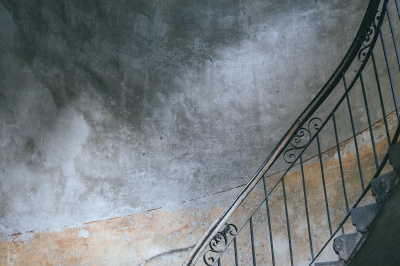What is a Damp Proof Course?
A Damp Proof Course (DPC) is a barrier that prevents moisture and water from rising up. It is installed in walls and floors to maintain a healthy living environment, protect the building’s structure, and reduce the risk of damp problems such as mould, rot, and other moisture-related damages.
In most cases, a Damp Proof Course is made from a plastic or metal material, usually a thick material like bitumen. The type of material used is dependent on the type of property, the grade of construction and the extent of existing damp issues. A DPC should be at least 150mm above the external ground and at least 15cm below the roof eaves.
The purpose of a DPC is to create a permanent waterproof barrier that prevents moisture from entering the structure of the building from the outside. This is accomplished through the use of special materials and techniques. The materials used are permeable which means that water can pass through them but the DPC will stop any water from coming in.
In some cases, a DPC may be applied as part of a re-plastering or renovation project. It can also be used to protect against any additional problems caused by rising damp from the ground.
Damp Proof Course (DPC) Injection
The most common method of installing a DPC is to inject a chemical solution into the mortar between the bricks and the plaster. This process is called DPC injection. The chemical solution consists of an acrylic polymer and is injected using a low-pressure injection gun.
When injected, the polymer expands and fills any gaps and crevices that may exist between the mortar and the bricks. The polymer forms a moisture-proof barrier that seals the building against rising damp. The injection is usually done in two stages, with a second injection taking place after the first has been completed.
Once the injection has been completed, the area is then covered with a new layer of render or plaster. This ensures that the DPC is completely sealed and safe from dampness. Another benefit of DPC injection is that it helps to improve the energy efficiency of a building by reducing the amount of moisture that can enter the interior walls.

Need assistance finding damp proofing near you?
Get a QuoteMortar Injection Damp Proof Course (DPC)
Another type of DPC is the mortar injection DPC. This type of DPC is applied by injecting a special mortar into the joints between the bricks and the plaster. The mortar fills any gaps and provides a more impervious barrier against moisture.
This type of DPC is usually applied as part of a renovation project, as it can provide extra protection against any water that may enter the building from the outside. The main advantage of this type of DPC is that it is more durable than a standard DPC, as it is much more resistant to damage caused by weather, wind, or even accidental damage.
As with any type of DPC, it is important to ensure that the mortar is of high quality, as any inferior mortar may not provide an effective barrier. It is also important to ensure that the mortar is applied correctly and sealed with a suitable sealant.
Electro Osmotic Damp Proof Course (DPC)
Electro Osmotic DPC is a relatively new and innovative form of damp proofing. This type of DPC uses an electrical current to prevent moisture from penetrating the masonry walls. The electrical current is applied to the walls, creating a field of negative ions which push water away from the walls, keeping them dry.
The main advantage of this type of DPC is that it does not require any excavation or injection, making it less invasive than other types of DPC. It is also an extremely efficient method of preventing dampness, as the electrical current is able to penetrate deep into the wall and provide an effective barrier against moisture.
Another benefit of EO DPC is that it is relatively easy to install, making it ideal for both commercial and residential applications. The installation cost is also relatively low, making it an attractive proposition for homeowners and landlords alike.
Damp Proof Membrane
The last type of DPC is a Damp Proof Membrane (DPM). This is a flexible sheet that is laid over the masonry walls and floors, providing an effective barrier against moisture. The membrane is usually made from a synthetic material such as PVC, rubber, or polyethene.
The sheet is laid in the same way as a standard DPC, but with the added advantage of being able to adhere to uneven surfaces. This makes it ideal for use in basements, where a traditional DPC is not suitable. This type of DPC also provides effective thermal insulation, helping to keep the interior of the building cooler in summer and warmer in winter.
However, it is important to make sure that the membrane is laid correctly to ensure that it is watertight. Any cracks or crevices must be sealed with adhesive tape or silicone sealant to ensure a secure seal. Once laid, the DPM should last for many years, providing an effective barrier against moisture and damp.
In this article:
